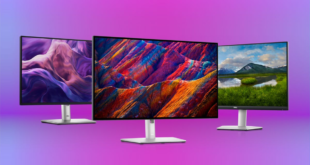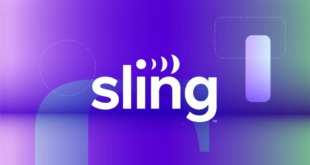
Logitech Creative Console
Pros
- If you don’t know the keyboard shortcuts for your apps, can be very useful
- Dial supports three Bluetooth connections
- Extremely customizable
- More convenient media controls than on a lot of keyboards
- Can upload your own icons
Cons
- Dial needs a stepped option, not just free spinning
- Can’t set the actions ring to appear in a fixed spot on your screen
- Getting the profiles configured the way you want can be tedious and unpredictable
A little over a year ago, Logitech acquired Loupedeck, known for its popular programmable devices designed to streamline workflows for professional creatives and streamers, like the Elgato Stream Deck and Razer Stream Stream Controller products do. The MX Creative Console is the first model under the Logitech brand, joining the company’s MX line aimed at advanced users, like the Master series. It has undergone a complete redesign to feel more approachable for creative professionals who may find all-in-one console designs and their complex customization software intimidating. One key change is the split between the button console and the dial functions, which are now two separate pieces.
It’s also a lot cheaper than most of the Loupedeck models, priced at $200. Despite the lower cost, it offers many of the same features as the $559 flagship Loupedeck CT. Plus, it includes three months of Adobe Creative Cloud for both new and existing users. It ships on Oct. 14 — I tested it with early versions of the software — and initially, the product will support a limited number of applications:
- Adobe Photoshop, Lightroom Classic, Illustrator, Express, Audition, Premiere Pro and After Effects
- Capture One tethering software for photographers (Mac only)
- Ableton audio/video editing software
- Spotify, VLC, Apple Music
- FaceTime, Discord and Zoom
- OBS, Twitch, Streamlabs (Windows only), VMix (Windows only) and Phillips Hue
However, more may become available by the time it officially launches.
This doesn’t mean you can’t create your own profiles for other applications, but without the plugin support you’re limited to hackish mapping of keyboard shortcuts and macros. The plugin is key, as it allows the Logi Options Plus app to access the full programming interface (API), giving you direct control over more settings without needing to manually configure each action. There are operating system settings included, both Mac and Windows, which is nice. And in November, Logitech plans to add the ability to back up your settings, which is crucial.
The CC comes in light gray or dark gray and consists of a Bluetooth MX Creative DialPad — it will also work with the $15 Logi Bolt Bluetooth adapter — and the USB-C MX Creative Keypad.
The DialPad has four programmable-per-application buttons, a big free-spinning dial (meaning there’s no start or end point, and no haptic feedback to indicate specific spots or units rotated) and a free-spinning roller. It supports connection to up to three devices and runs on AAA batteries, rated to last up to 18 months.
The Keypad is a button pad with nine visible mappable buttons and a pair of previous/next page buttons. It supports up to 15 pages of mappings per application. It comes with a stand with a cable router that holds it at an angle. I wish it were adjustable because the fixed angle doesn’t work for me and neither does lying it flat. Someone could probably design and 3D print a custom version. Not me, though.
It comes with a stand that you drop the keypad into to hold it at an angle. Yes, it’s not seated properly in this photo.
When Options Plus is loaded, you can pop up an onscreen Actions Ring, an app-specific, programmable overlay ring of controls. You select a tool and then manipulate it using the DialPad or another device. In many cases, these functions are the same as those available on the Keypad, but they’re handy for situations where you’re already mousing around the screen. Unfortunately, the Ring always pops up at your cursor, which can be frustrating if you reflexively move down to the bottom of the screen to prevent accidental changes while pressing mouse buttons. For some folks, it popping up at the cursor makes sense, because you don’t have to move anywhere to start selecting. But I’d like an option for those of us who work differently.
To program everything, you basically drag and drop from a list of actions to the control or button; each set of those is a profile, and each application can have multiple profiles. It can automatically load a default profile based on the application or tool within the app you’ve switched to. As with the Loupedeck, you’ll be able to get user-contributed profiles for it in Logi Marketplace.
But as far as I can tell, if you want to be able to use several profiles within an application, you have to manually add a Switch Profile button for every profile you want to switch to and in every profile you want to switch from. If there’s a slider for it in the interface, you have to adjust it via a dial or roller if you want to use it with the CC.
The interface for the simple control mapping in Logi Options Plus.
More annoying, the software doesn’t allow you to add buttons from other profiles or merge profiles for frequently used or custom functions you want in every profile. For example, I need several types of screenshots accessible from every app. I test keyboards, and a lot of the small ones don’t have a PrtSc key, so I have to remap at least one shortcut in Game Bar, which is a nightmare. (Almost every combo says: “That shortcut won’t work. Pick another one and try again,” rather than telling me which ones ARE available.)
There are also some constraints that Logitech has little control over because they’re not in the API. And in my case, there’s a lot of stuff I want it to do that it can’t. For instance, Adobe doesn’t have an API for Camera Raw in Photoshop.
The Dial is big, which is nice, but I wish it had some feedback.
In my case, it can’t provide direct access to the numeric fields, at least as I’ve seen in Lightroom and Photoshop. (I think you have to create macros if you want to work around using the dial.) But I want to go to specific values for exposure changes, like 0.3, 0.7 and so on. It’s faster for me to just click into that box and type it than anything CC can do given the API.
And using the free-spinning dial for anything precise is frustrating, unless you have excellent fine control in your nondominant hand (which I don’t), no matter how low a speed you set it to. I need feedback that tells me “yes, you’ve moved a unit in that direction” or “yes, this is the halfway mark for volume or brightness.” So, for example, I ended up having to remap the top buttons on the Dialpad in Lightroom from undo/redo to previous/next photo to stop flying past the photo I wanted. Frankly, I’ll probably just keep using the arrow keys. In a perfect world, it would work like the scroll wheel on some gaming mice, where you could switch between the free-spinning and stepped modes on the fly. Not everyone feels the same, but if you do, consider yourself warned.
The Keypad’s keys are high-contrast with adjustable brightness, which is nice for those of us who work in the dark.
I find the Keypad more useful than the DialPad, partly because you can add multi-step actions to a single button press, such as filter by flag, select all and export in Lightroom. A lot of actions are just easier to perform with the keyboard if you’ve already memorized the shortcuts — trying break muscle memory isn’t worth it. But for the stuff you only do occasionally, it can be faster than trying to remember where it is in the interface.
One problem is that I’d like to be able to reorganize them to put the things I do frequently on the first pages and group them together differently. You can move the buttons around, change the icon fonts, colors, backgrounds and so on, but I couldn’t find an easy way to move them from page to page. Trying to find a little-used tool in more than two or three pages of choices if they’re not organized your way really isn’t faster. Nor could I find a way to batch edit them, for example, to change the background colors or fonts to color code them for an entire toolset or application. There are only two global settings, for key brightness and to toggle the automatic profile switching on and off.
Logitech says that it’ll probably, eventually, add the Options Plus settings to G Hub, which would make it a lot more convenient for streamers and others who have Logitech gaming gear. So there’s no need to run two utility applications; the company already does this with its MX Brio webcam. Yay!
How much you’d appreciate the MX Creative Console really depends on a lot of variables, including which applications you use frequently, whether the keyboard shortcuts you need are branded into your brain or not, how dextrous you are with the hand you’ll need for the Dialpad, how much customization you’re willing to do if the default profiles don’t cover enough of what you need and more. I think there’s something here for everyone, but whether it’s worth the $200 if you don’t really need it is another story.
 meganwoolsey Home
meganwoolsey Home



